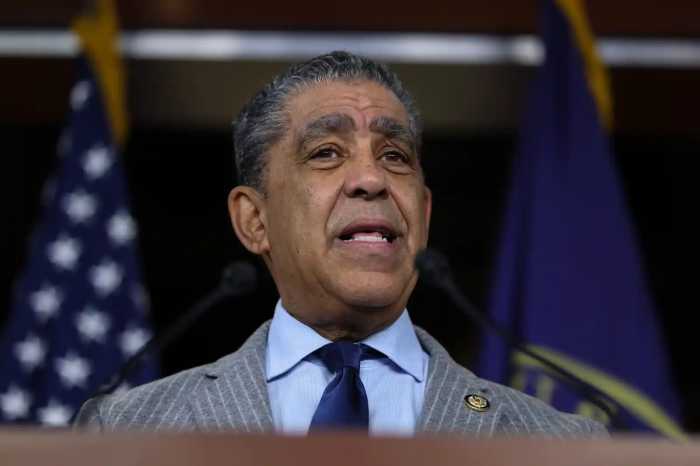A group of Great Neck public school educators hope to incorporate antisemitism prevention education into their curriculum inspired by a Brandeis University program they attended. A preliminary outline of what educators plan to include was presented at a school board meeting on Wednesday, Sept. 17.
The six educators attended the Brandeis University Middle and High School Educators’ Institute on Israel and Antisemitism in July through a competitive scholarship opportunity.
Daniel Holtzman, assistant superintendent, began the presentation by discussing the intensive summer institute and what the team of educators plans to do with the knowledge they gained. Holtzman was awarded the Yavner Teaching Award from the New York State Board of Regents earlier this year. The implementation of antisemitism prevention will vary based on grade level.
“We’ve made different choices as is appropriate for the different students that we see,” said Patti Crisafulli, the social studies chair at North Middle School. “What we might be challenging a 12th grader with is not the same as we might be introducing to a sixth grader.”
Crisafulli wants middle-school education to weave antisemitism prevention education into the existing curriculum rather than a one-week program or an addition that may not resonate and risks feeling like additional work. “It becomes one more thing to get through as opposed to something that’s going to really be shaping the way you act, and something you can take outside of the classroom.”
She used a timeline of antisemitism provided by Brandeis to connect every social studies unit already taught to primary source documents. For example, the school is already teaching about Columbus, but through the new, antisemitism prevention education would include the experiences of Sephardic Jews during that time.
“The documents are horrifying and fascinating,” Crisafulli said. “It’s the skills we need, it’s the critical analysis and the thought, but it’s the context and the awareness of how long antisemitism has been with us, and how are we building a free society.”
Sal Casto, an English teacher at North High School, hopes to implement a unit that explores the persistence of antisemitism across different societies and time periods. The central goal, Casto said, would be to go beyond identifying oppression, “but to highlight Jewish resistance, resiliency and agency.”
“I hope this will have students examine how Jewish individuals and communities have confronted injustice, both historically and today, while also emphasizing the interconnected ways in which identity, history and literature are used for critical thinking and to promote justice.”
The team also created a course on the history of antisemitism for educators in the district. The course will be available in November and will incorporate Brandeis material. They feel it is their responsibility to turnkey the lessons of the institute.
Maya Lerner, the department head of library media and building staff developer at North High, spoke about the importance of media literacy in preventing hate. “The ability to critically evaluate the information that they’re seeing online, to be able to understand how narratives are shaped, and to be able to identify reliable sources is not optional. It is vital,” Lerner said. “When students can trace claims to evidence, when they can recognize emotionally manipulative content, when they can spot misinformation, they’re more empowered to form thoughtful and informed perspectives.”
The institute, Lerner said, also equipped educators with the strategies needed to help students “engage with multiple perspectives and to respond with respect, empathy and curiosity.” “Both media literacy and civil discourse directly support the kind of learner that we’re working to develop here,” she said.
Educators will provide additional information on antisemitism prevention education in the coming months.
In other news, the Board of Education swore in two ex-officio student members at the meeting. The students, Maxwell Pour and Katie Leder, were inducted by their high school principals. This follows the new state law that requires every school district and BOCES board to include at least one ex-officio student member on its school board. The rule went into effect July 1.

Leder later participated as a board member, responding to the staff presentation about antisemitism prevention education. She explained that the initiative shows how much the participating teachers care about the material they’re teaching. “I myself have Jewish family, and I’m aware that a lot of the students in this district are Jewish. It’s super important that this is a foundational new education development,” she said. “I’m really lucky to be a part of this district.”
































